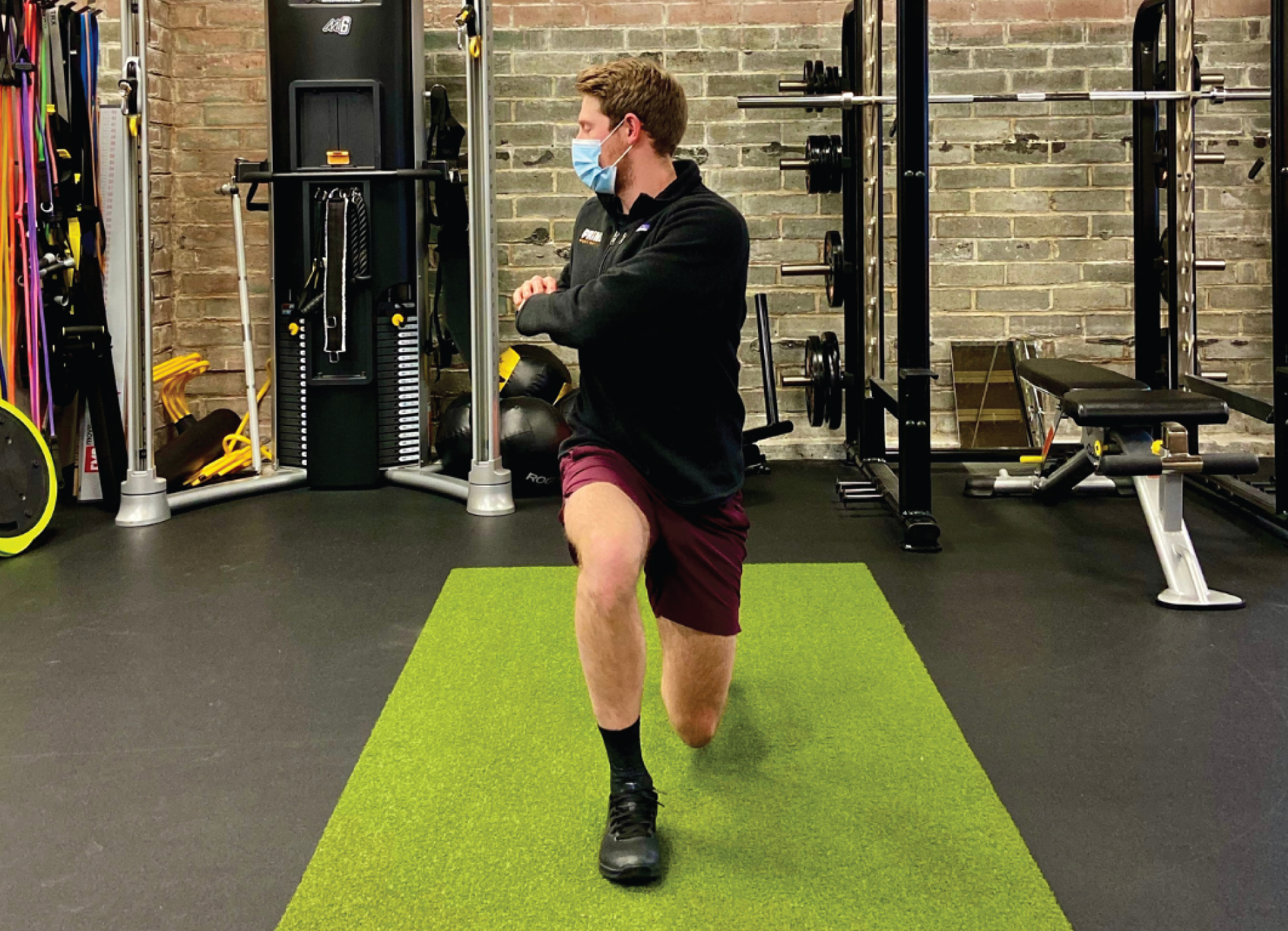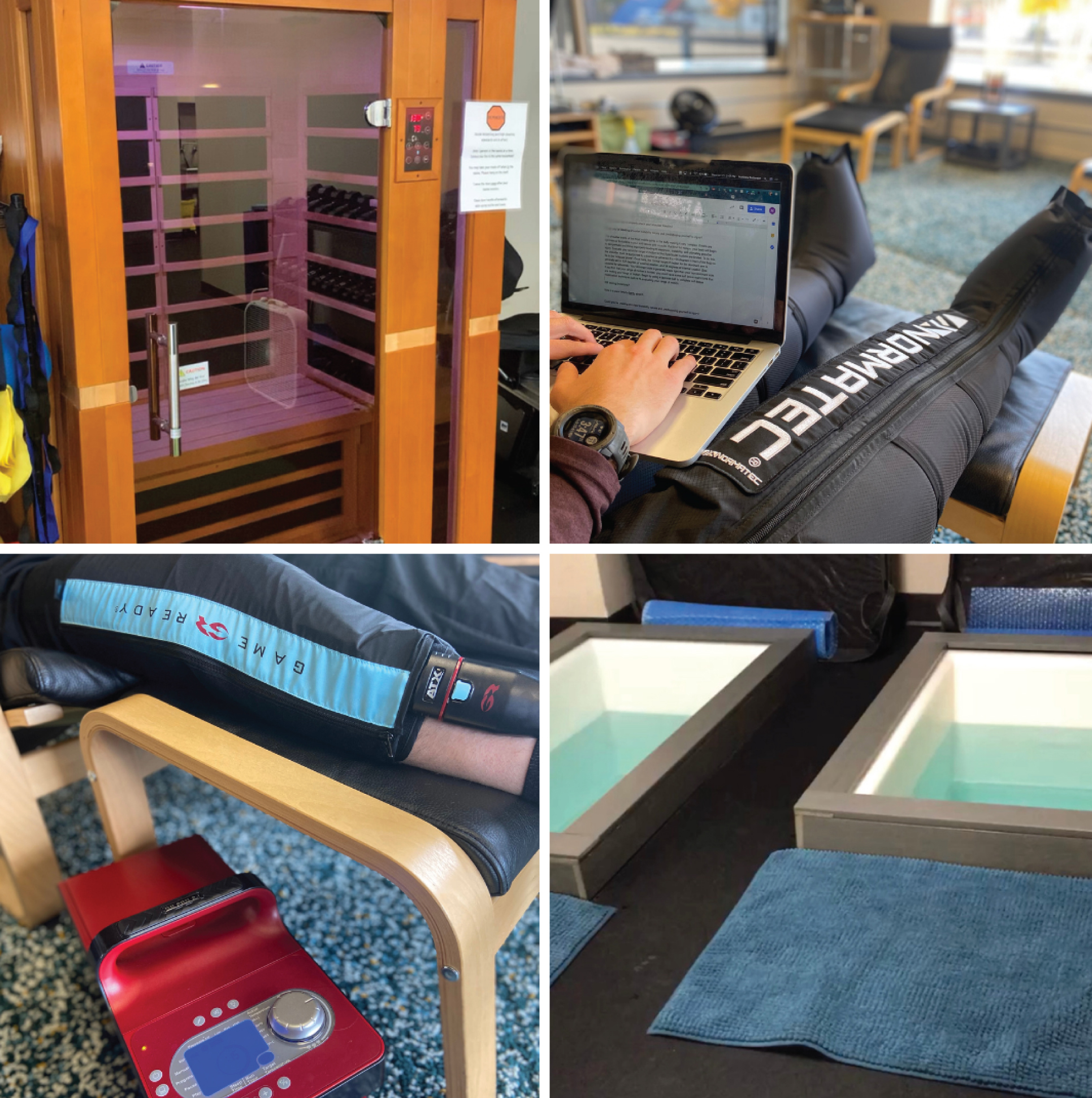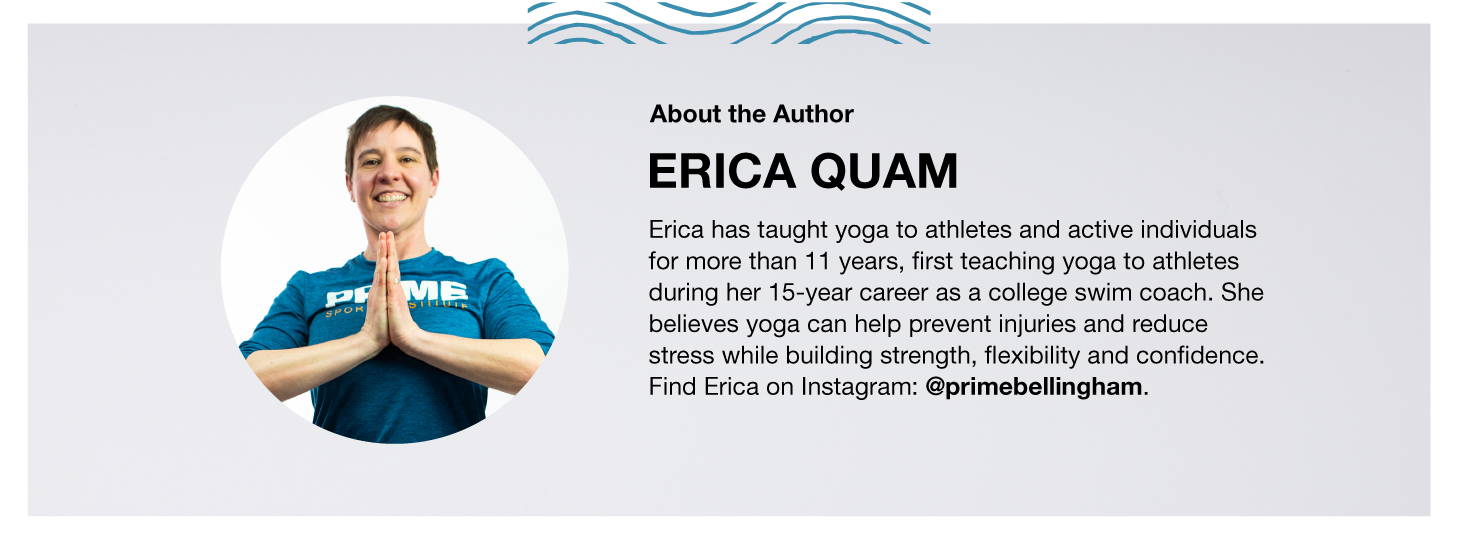
Written by: Erica Quam. Erica has taught yoga to athletes and active individuals for more than 11 years, first teaching yoga to athletes during her 15-year career as a college swim coach. She believes yoga can help prevent injuries and reduce stress while building strength, flexibility and confidence. Find Erica on Instagram: @primebellingham.
Recovery receives a lot of attention, but what exactly is recover and how do you recover properly?
What is recovery?
The most basic goal of muscle recovery is to manage and prevent muscle damage, as well as to alleviate delayed onset muscle soreness (DOMS), inflammation and fatigue. Recovery is the time the body adapts and rebuilds stronger from the stresses of working out and training, and this is the only time those adaptations can occur. Recovery also involves the body’s endocrine system, tendons, ligaments, bones and your mind. All these components need recovery.


Active and passive recovery
Classically, there are two different recovery methods: active and passive
Active recovery means staying physically active while recovering from high intense bouts of exercise, while using non-strenuous movements.
Passive recovery means to rest.
The missing piece
A major missing component of training I see with my athlete patients is recovery. It eventually leads to injury. They push and push. They see their friends on IG doing a section of trail they haven’t done in a while and have serious FOMO. Instead of taking a recovery day, they head out to push their body once more.
Consistency of working out is important for many reasons; however, be wary of the temptation of things like “run streaks” where you don’t take a single day off. It’s important to take rest days to ensure injury free, long term healthy goals.
How to recover


I challenge you to think about simple ways you can integrate recovery into all aspects of your life.
Recovery has many spokes to the wheel.
When you understand the basic components of recovery, it becomes easier to optimize what you do to reap the benefits of recovery for health, wellness and injury prevention.
Let’s deconstruct different recovery components to help you understand how easy it is to add recovery into your normal daily routine.
Nutrition
A well balanced diet with adequate macro and micronutrients is important for daily function but can be utilized to help your body adapt and perform at a higher level.
Proper intake of macronutrients (carbs, proteins and fats) supplies your body with energy to perform in activity and are critical for replenishing energy stores, repairing and building muscle mass afterwards. To fuel your work optimally, plan a large balanced meal 3 hours prior and add a small snack with mostly carbs and some protein just 30 minutes before.
Micronutrient (vitamins and minerals) intake is also important for recovery and helps regulate immune function, energy levels, help build strong bones, and allow you to perform at your best.
For more information specific to optimal fueling, schedule an appointment with a registered dietitian.
Hydration


Optimal hydration requires a balance of both fluids and electrolytes. Are you getting enough?
Benefits of Hydration:
1. Moistens tissues in eyes, nose, mouth
2. Regulates body temperature through sweat
3. Lubricates joints
4. Transports nutrients, oxygen, and waste products of the blood and across cells
Commercialized products like Gatorade and Powerade claim they hydrate you. The fact is, most commercial sports drinks on the market won’t hydrate you as well as they claim, and they might actually impede your performance by effectively dehydrating you.
Before exercise, Prime suggests choosing one of three methods:
1. Drink water with a dash of salt (1/16 tsp. table salt per 20 oz. water)
2. Drink high sodium broth/soup
3. Eat salted watery fruits and vegetables (ie. salted tomatoes, apples, watermelon).
*If it’s easier to drink a pre-made beverage, we recommend Nuun. If your exercise is 60-90+ minutes, use Nuun Performance.
After exercise:
1. Protein+Carbohydrate-based recovery drink/smoothie.
2. Low-carbohydrate electrolyte drink
3. Soups
4. Salted watery fruits/veggies (salted tomatoes, salted (water)melons).
Sleep
Are you sleeping enough to allow your body to recover, adapt, and improve? Is that enough sleep to recover, adapt and perform better or just get through daily life?
Depending on the person, seven to nine hours of sleep is needed for recovery and tissue healing. During sleep stress hormones are cleared and replaced by restorative hormones. In deep sleep, oxygen and nutrient-rich blood is diverted to muscles, promoting repair, maintenance and growth of tissues and muscles. Adequate sleep is key to allowing your body to repair and recover, and can even help reduce muscle soreness.
Sleep duration is only half the battle. Sleep consistency is especially important for maintaining your circadian rhythm, also known as your body’s internal clock. A well-maintained circadian rhythm plays a vital role in your body entering REM and deep wave sleep, both of which are necessary for restoration. Tracking your bed- and wake-times and making them as consistent as possible is a great way to improve sleep quality. Additionally, engaging in a pre-bed ritual such as laying down with your calves elevated is a great way to wind down and signal to your internal clock that is time for bed.
Pro Tip: Turning your screened-devices off 30 minutes before bed limits sleep disruption
Relaxation and Meditation
For active individuals, setting aside time to relax and rest might be difficult or even unappealing. Meditation and relaxation is used to slow down and give the mind and body a break from stimulation. Our bodies are unable to tell the difference between good (exercise) stimulation, and bad (stress) stimulation and if left unchecked can build up over time leading to burnout and other negative effects.
Beyond stress reduction, meditation helps to improve sleep quality, aids in body awareness and focus and benefits recovery from exercise. As with most things in life, practice makes perfect and meditation is no exception. Even a few minutes of meditation a day has benefits! Spending time in nature, doing breathing or positive visualization exercises are other ways to relax and aid in recovery. New to meditation? It's easy to get started. Check out these 10 meditation tips for beginners.
Treatment


Your body, just like a car, needs maintenance every so often. This is critical in order to keep it running smoothly. That doesn’t mean you should wait until the “check engine” light comes on to do some maintenance!
Even if you are diligent about at-home care there will be some point you might need a skilled professional because the tools just aren’t enough. Schedule an appointment for massage therapy or acupuncture. At Prime Sports Institute, you can see a licensed athletic trainer to receive several different manual therapy techniques, instrument assisted soft tissue mobilization (Graston/IASTM), and cupping. We also utilize compression therapy to help flush tired and sore legs, hips, and arms similar to massage therapy. Treatment is a great way to give your body a rest and address any nagging issues you may have.
Contrast baths, alternating between 107 degree water for 3 minutes, and 54 degree water for 1 minute, for 3 cycles helps reset the nervous system as well as pumps out the metabolic byproducts your body has accumulated leaving it restored and ready for more.
Take a whole recovery day to receive the treatment and attention your body deserves.
Stretching and Cool Down
Stretching is simple, yet often overlooked when things are working well. Regularly stretching maintains existing flexibility and reduces tightness in problematic areas. In turn, this enhances athletic performance! Begin a routine of stretching as weekly maintenance rather than a reaction to feeling tightness or discomfort. Consistency is key!
Don't have a routine? Yoga can be an effective tool for beginning a stretching routine and has many other benefits. Not all yoga is the same. Recovery isn’t the time to go do a power yoga session!
Yoga is a versatile cross training method that challenges and improves flexibility, as well as coordination, body awareness and helps develop breathing techniques. Restorative yoga incorporates the mental aspect of relaxation along with physical relaxation. Other recovery benefits of yoga include enhanced circulation and flushing of metabolic byproducts.
Cooling down after workouts.
During strenuous activity, the sympathetic (aka ‘fight-or-flight) nervous system is activated. When you begin the cool down process the body “flips the switch” to the parasympathetic (aka ‘rest and digest’) nervous system beginning the process to recover.
This cool down process is winding to a light level of activity for ideally 15 minutes afterwards to begin to clear away lactic acid that accumulated during higher intensities, and bring in oxygen and nutrients for repair. Most importantly, the body switches from sympathetic to parasympathetic mode because it senses the reduction in intensity.
If you go from activity directly into physical or mental stimulation that switch to parasympathetic might not even fully happen until that evening during sleep. This is not optimal for progression.
Foam rolling and other self-myofascial release tools
Do foam rollers, lacrosse balls, and stick rollers actually do anything?
Absolutely! They are effective in self-massage causing myofascial release, which is a fancy term for manually releasing tension in muscle and connective tissue. Massage is the gold standard for myofascial release but these tools can be just as effective if used correctly.
Foam rolling increases flexibility, prepares tissues for work, enhances performance, reduces delayed-onset muscle soreness (DOMS) and helps flush out lactic acid after a workout! If there are any tight, painful spots in a muscle, foam rolling can help release it.
Try a simple foam rolling routine and spend 60-90 seconds per muscle group. This limits a foam rolling routine to only 5-10 minutes making it manageable to fit in more often. Consistency is KEY!
How to create lasting recovery routines and habits
One of the biggest obstacles in the way of a lifestyle change is creating a new routine that sticks. Even the simplest things like drinking more water can be a challenge! Here are a few tips to create a new habit:
Start small with achievable goals
Choose one or two things to add in and master before adding in others. This could be adding a couple minutes of foam rolling to your day rather than waking up at 4am to begin fitting in exercise. If you choose a goal too big, and cannot consistently achieve it, this will tank your motivation right from the start.
Commit to 2+ weeks of daily change and it will become easier to continue long term
New habits stick for longer and faster by pushing yourself to do it daily. See if you can stick to it for a full 30 days.
Set reminders
Choose a time in the day that works for you and set an alarm or put a note on your fridge/computer/mirror so you won’t forget. There might be an ideal time to add particular habits like foam rolling just before or after a workout. However, if foam rolling is most achievable before bed that is perfect, as long as the new habit is being done where it wouldn’t have been in the past, that is a success!
Hold yourself accountable
Starting a new habit with a buddy is excellent motivation. If someone else is counting on you, you’ll be less likely to skip out on a day of recovery.








